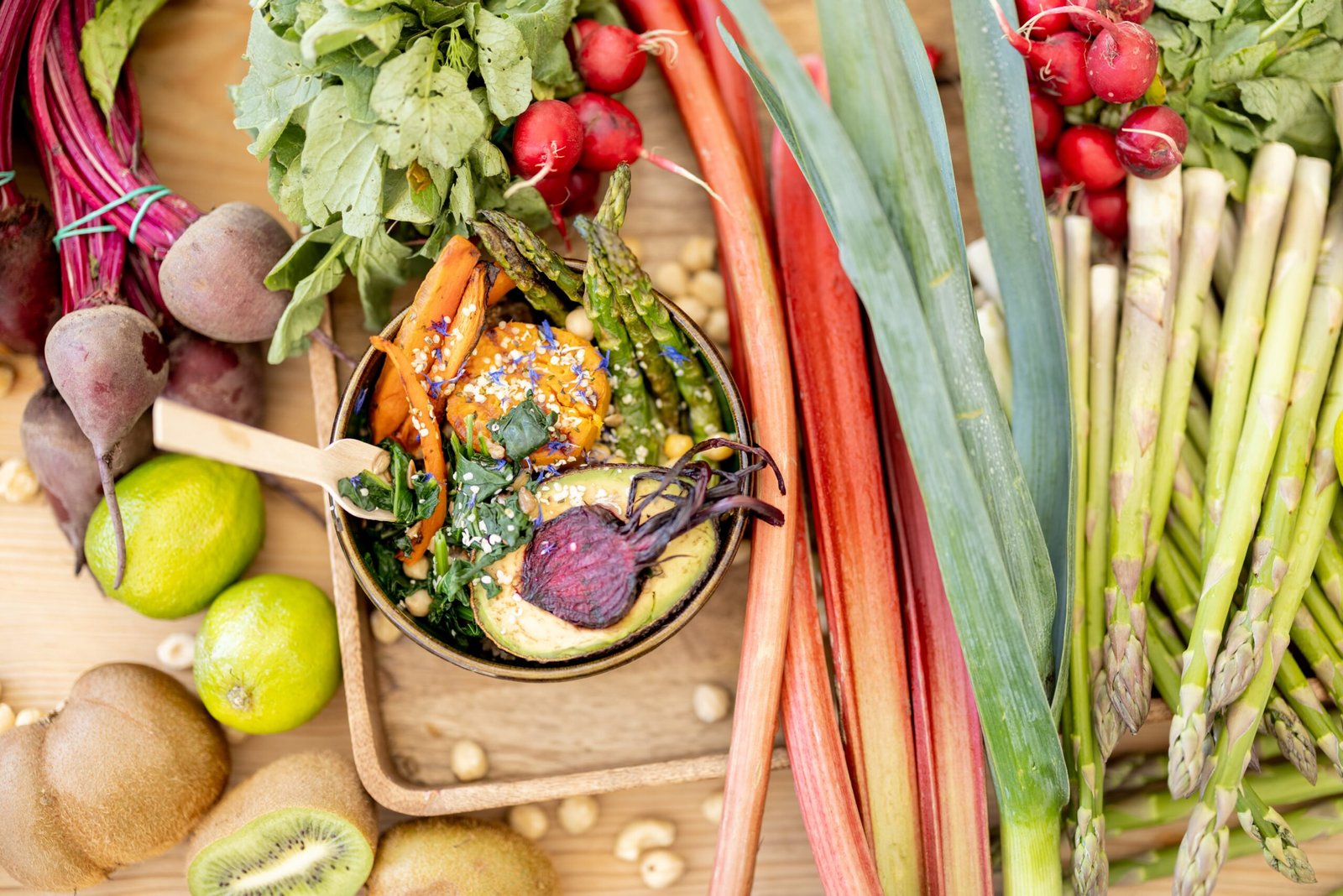The best diet for a healthy gut
15 March 2021

It’s no secret that I am very enthusiastic about gut health – and so is everyone else in the wellness industry. The term ‘gut health’ is thrown around like confetti, with every influencer promoting ‘the gut health supplement that changed their life,’ or how ‘seed oils are killing your gut.’ I have even seen an ad that said, ‘this supplement almost clogged my toilet,’ which I must admit, is a very creative way to promote an expensive laxative.
But before spending your savings on supplements that don’t work, or eliminating so-called ‘toxic foods,’ perhaps you should first understand what a healthy gut actually is (and is not). Here I will highlight my go-to foods for a healthy gut and provide some practical tips on how to eat a variety of plant foods weekly, without breaking your budget.
What does a healthy gut look like?
We don’t know! It’s ironic – even with all the research and hype on gut health, it is still not clear what defines a ‘healthy gut,’ but we do know what a healthy gut isn’t.
If you have an unhappy gut, you may be experiencing [1]:
- Painful bowel movements
- Digestive discomfort (e.g. excessive bloating or gas)
- Constipation (< 3 bowel movements per week)
- Diarrhoea (> 3 urgent, loose bowel movements per day)
- Frequent infections or illness
- Widespread inflammation
An imbalance in the gut microbiome, often referred to as dysbiosis, can lead to various health issues including inflammatory bowel disease, nutrient deficiencies, blood results that are out of normal range, weight changes and poor mental health [2].
What studies have found is that a healthy gut is:
- The absence of these unwanted symptoms
- A diverse microbiome – the community of trillions of bacteria, viruses, and fungi living in our intestines.
These microorganisms play a pivotal role in digestion, nutrient absorption, immune function, and even mental health. The greater the variety and diversity of different microorganisms in your gut, the more likely you are to be protected against viruses, diseases and harmful bacteria that wreak havoc and cause inflammation in the gut. Building a microbiome that is diverse all starts with your diet.
What is the diversity diet?
The diversity diet isn’t another fad diet that forces you to eliminate whole food groups. The diversity diet focuses on increasing the different types of foods in your week to promote a varied and balanced gut microbiome. This approach is based on the understanding that different species of bacteria thrive on different nutrients. By eating a diverse array of foods, particularly plant-based foods, you provide your gut bacteria with a range of nutrients necessary for their growth and function.
The diversity diet has been widely promoted by Dr Megan Rossi, scientist and dietitian, who recommends consuming at least [3]:
- 30 different plant foods each week
- 30g fibre per day
While this may seem like a stretch for some, plant foods don’t just refer to fruits and vegetables, but also wholegrains, nuts & seeds, legumes, herbs & spices. This variety ensures that you are getting a broad spectrum of fibres, vitamins, minerals, and phytonutrients, all of which contribute to a healthy gut [4].
What are the best foods for a healthy gut?
Hint: it’s not kombucha!
You may be surprised to find that some humble pantry staples are actually key to your gut health (and much cheaper than kombucha!). While probiotics, the live bacteria found in fermented foods, are placed on a pedestal, research shows that prebiotics actually provide more benefit. Prebiotics are types of fibres that bypass digestion in the stomach and small intestine, where they are fermented by bacteria in the large intestine.
Prebiotic-Rich Foods
Garlic and Onions: These contain inulin, a type of prebiotic fibre that promotes the growth of beneficial bacteria. Plus, they add amazing flavour to all meals!
Rolled oats: Rich in beta-glucan, which has prebiotic properties and also improves heart health. Use in overnight oats or porridge.
Legumes: Such as lentils, chickpeas and beans are not only high in protein, but prebiotic fibres to support your gut microbiome. If you are not a regular consumer of legumes, start small, with ¼ cup tinned lentils a couple of times a week. If you go too hard too fast, you may end up with a fair bit of gas!
Cooked and cooled potato, rice and pasta: The cooling process of these carbohydrates creates a resistant starch, which feeds your gut bacteria. All the more reason to use leftovers for lunch!
Kimchi and sauerkraut: While these foods do contain live bacteria, we have no idea what species of bacteria they contain. They likely do provide benefits, but these foods are also sources of prebiotic fibres that feed your hungry microbes.
Probiotic-Rich Foods
The most effective probiotics are found in dairy. This is because the acidic nature and protein in dairy act as a buffer, meaning that they protect the probiotics from digestive juices so they are more likely to reach the small intestine. Some of the best sources are:
Yoghurt: Look for brands that contain Lactobacillus and Bifidobacterium species. Some great brands are Activia, Vaalia probiotic yoghurt & Kefir and Jalna Biodynamic yoghurt.
Kefir: A fermented milk drink with a diverse range of probiotics. Again, look for brands that state on the label that they contain Lactobacillus and Bifidobacterium. My favourite brands are Rokeby Farms and Farmer’s Union Plus.
Yakult: The OG of probiotics and very underrated. It contains the very well researched Lacticaseibacillus paracasei Shirota strain which has been proven to survive digestion and improve the diversity of bacteria in the gut.
How to eat 30+ plant foods per week
Achieving a goal of 30 different plant foods per week might seem daunting, but with a little planning, it is entirely feasible. Here are some practical tips:
Plan Your Meals: Create a weekly meal plan that incorporates a variety of plant foods. Include different fruits, vegetables, whole grains, nuts, and seeds in your shopping list
Smart swaps: Instead of buying your regular spinach, why not buy a bag of mixed leafy greens? This way you are getting 4-5 different greens instead of the one!
Boost your plant protein: Add a tin of lentils or beans to your mince dishes. This is a great way to boost fibre and reduce the cost of meat.
Keep It Colourful: Aim to eat a rainbow of fruits and vegetables. Different colours often indicate different types of beneficial nutrients 11.
Shop seasonally: If you are in the habit of buying your regular apples and bananas, why not branch out and buy some different seasonal fruit like mandarins or stone fruit?
Experiment with Grains: Incorporate less common grains like millet, farro, and buckwheat into your diet. A great way to do this is buy pre-cooked rice.
References
- Rinninella, E., Raoul, P., Cintoni, M., Franceschi, F., Miggiano, G. A. D., Gasbarrini, A., & Mele, M. C. (2019). What is the Healthy Gut Microbiota Composition? A Changing Ecosystem across Age, Environment, Diet, and Diseases. Microorganisms, 7(1), 14. https://doi.org/10.3390/microorganisms7010014
- Hrncir T. (2022). Gut Microbiota Dysbiosis: Triggers, Consequences, Diagnostic and Therapeutic Options. Microorganisms, 10(3), 578. https://doi.org/10.3390/microorganisms10030578
- Rossi, M. 2021. All about the diversity diet. Accessed 24 May 2024 https://www.theguthealthdoctor.com/all-about-the-diversity-diet
- Heiman, M. L., & Greenway, F. L. (2016). A healthy gastrointestinal microbiome is dependent on dietary diversity. Molecular metabolism, 5(5), 317–320. https://doi.org/10.1016/j.molmet.2016.02.005
